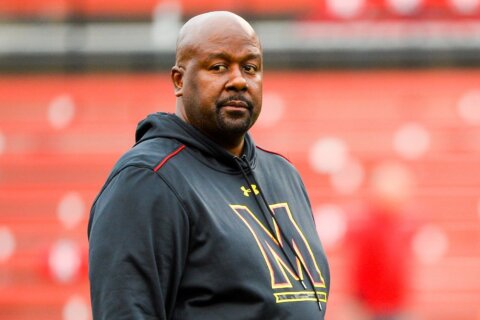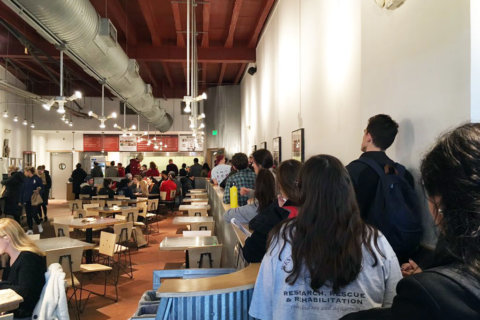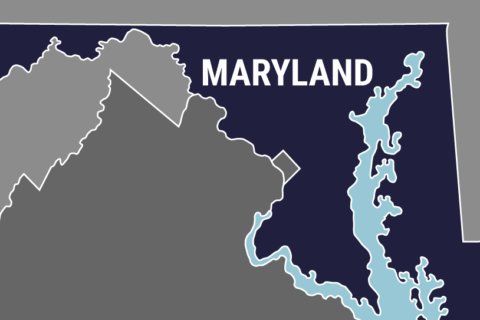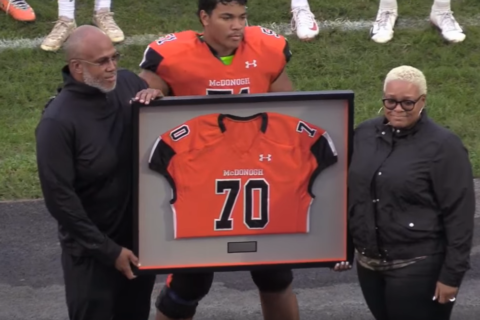The death of a football player during a team workout at the University of Maryland last year has prompted the school to enact several reforms, in some cases changes that go beyond what any other intercollegiate athletic program in the country has implemented.
Wednesday saw a rather positive athletic department oversight meeting held by the advisory committee put together by the University System Board of Regents, which spent nearly four hours listening to a rundown of the progress made by the department, after it was given a list of 41 different recommendations that were issued in a pair of reports last year.
Most of those recommendations have been put in place already.
Rod Walters issued 20 recommendations after he studied the response by the school’s training staff when 19-year-old student-athlete Jordan McNair collapsed during a football workout last year.
So far, 18 of those have been implemented, with a 19th close to being crossed off, too.
The 19th recommendation focuses on the creation of an outside advisory board that looks at the training staff’s protocols and procedures. Right now, that panel will be led by Walters, with the rest of the board’s makeup likely to be announced in the coming weeks.
“It’s purely an external review,” Walters said. “They will look at processes, the practices they have at the university and then, based on their areas of expertise, they can give feedback to them.”
That panel will likely meet in person at least once a year while remaining in regular contact beyond that. Walters said it’s similar to his work on a panel at the University of Georgia.
The other recommendation from the Walters report, which is somewhat redundant with the recommendations from the committee that looked at the culture in the department, focused on the health care model for student-athletes. The school’s medically certified trainers still report to an associate athletic director.
One report recommended what’s called an “independent care” model, which moves the entire training staff to a separate chain of command.
That’s an issue still being studied by the athletics department, Athletic Director Damon Evans said.
“We’re going to put the model in place that’s going to be best for our student-athletes, provide the best possible health care,” Evans said. “Hopefully, in the coming months, we’ll be able to clearly identify what that model is.”
Evans denied he had reservations about implementing the independent care model.
In addition to student health care, Evans said new channels of communication have been opened up so that athletes could register complaints about treatment from coaches and other staff members. That included an anonymous online portal.
“We were looking for more avenues through which student-athletes could communicate with us directly,” Evans said. “That allows us to get in real-time; that allows it to come in confidentially.”
Since the portal was created last fall, it has not received any complaints from athletes.
Far more preparation is also taking place when it comes to workouts and practices. Coaches are meeting with trainers on a daily basis now, while also getting medical and response training that surpasses the typical CPR certification given to them at other schools.
And more thought is also going into how weather might impact practices and workouts.
The school is measuring the environment around practices and workouts with what’s called a “wet bulb globe temperature,” which goes beyond air temperatures to include factors like humidity and the surface athletes are using for their practice or workout. For example, an artificial turf surface will trap heat and that can create a much warmer environment compared to grass, and so all of that gets factored into practice and workout preparations, and if needed, adjustments are made to how strenuous that day’s activities might be, or whether they have to be moved to a different time of day or venue.
Rod Walters, a training consultant retained by the school since conducting a study that looked at the training response to McNair’s death, said that based on the temperature and how that affects the workout environment, coaches can decide how much activity is appropriate, whether modifications are necessary or whether the activity is better taken indoors.
The hearing wrapped up with a 40-minute presentation from football coach Mike Locksley, a man Evans called the “most qualified” person to run the program, considering how well he understood what the school, football program and region were going through.
Locksley touted his mission statement, which is focused on inspiring football players to maximize their abilities in football, academics and in the community.
Locksley has been on the job for just over two months, and admits he is still in a “honeymoon phase” but that it became apparent there was a serious lack of trust the football players had for anyone outside of the locker room.
He said that extended to previous coaches and athletics department staff, and so he has spent a lot of time working to rebuild trust between the new coaching staff and the players.
Locksley also conceded the circumstances he and his coaching staff find themselves in are different from what’s experienced at other schools. For instance, he has never had to participate in what are called “emergency action plan” drills, where coaches and trainers practice lifesaving responses.
These recommendations and the oversight that comes with them will put the school “at the forefront of player safety,” Locksley said. He called it a “game plan” for the safety of athletes.










